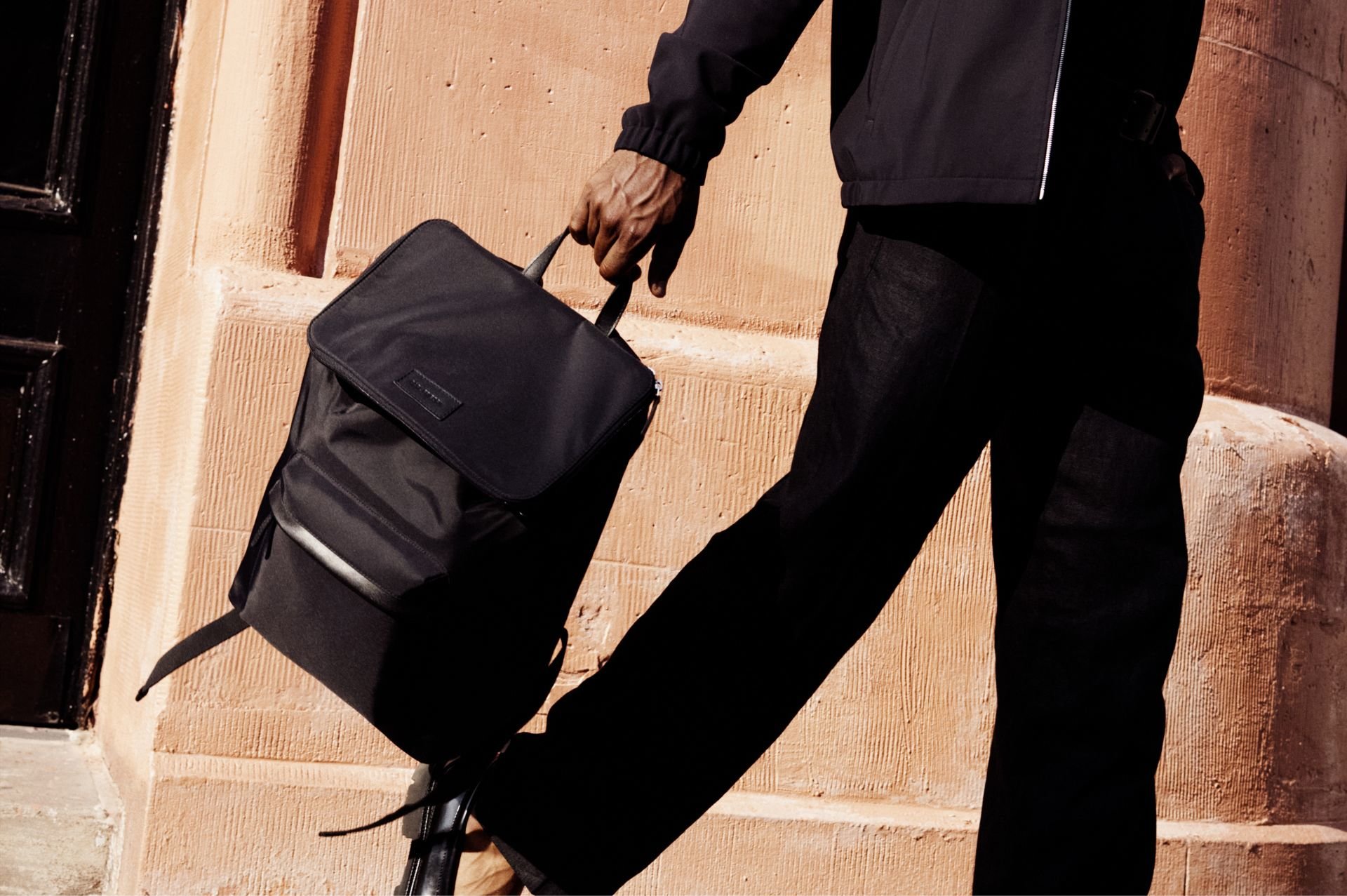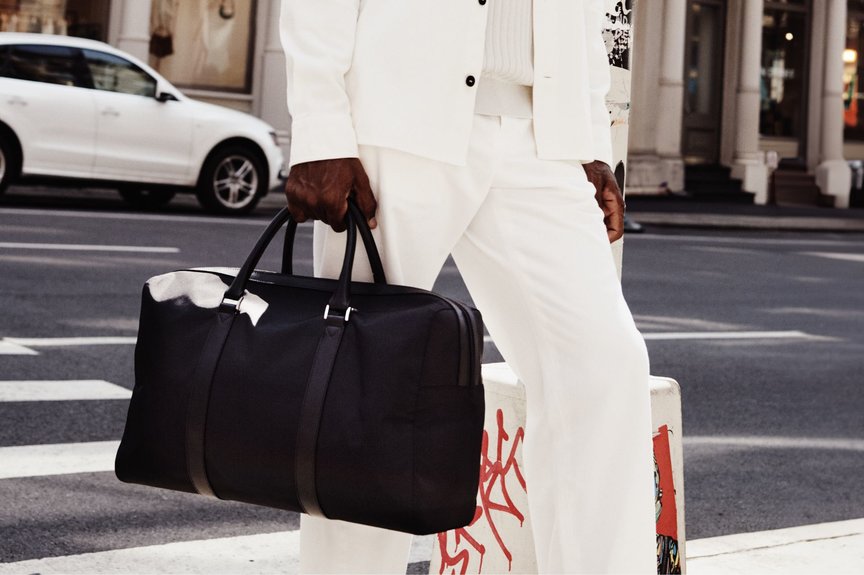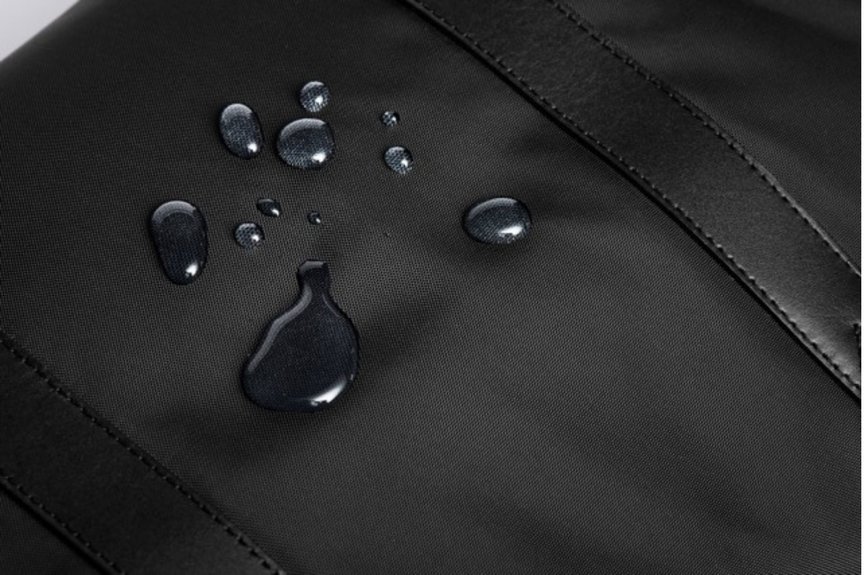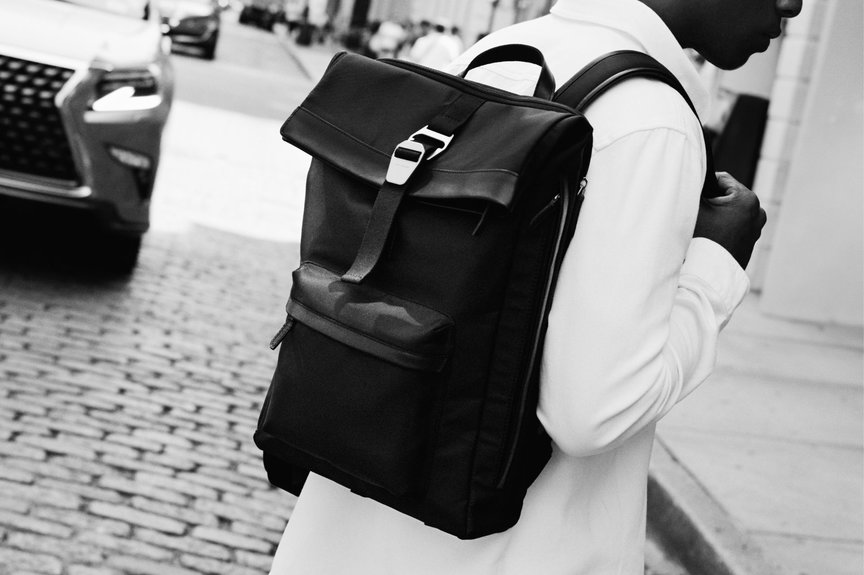One of the most crucial factors of any bag design is the materials used to construct it. Choosing the right materials (that are also of premium quality), can make or break the durability and overall performance.
Nylon bag guide
Published 2 years ago

There are many fabrics out there suitable for bag making, but some are far superior to others. Nylon, like high-quality leather, is a popular material due to its inherent strength and versatility. Not to mention its high water resistance.
In this guide, we'll tell you everything you need to know about nylon in the context of bag making, including what nylon is made from, used for and how it compares to leather.

What is nylon?
Developed in the 1930s, nylon is a synthetic polymer that has long been used across various textile-related industries like bag and clothing production. It's seen as one of the most versatile textiles ever made and revolutionised the textiles industry with its arrival and commercial success.
It became a cheaper and more popular alternative to silk, as it gives a smooth, sleek and shiny appearance for a fraction of the cost. Nylon is made from polymerisation. This is a process in which raw materials are subjected to chemical reactions to form polyamide molecules, which give us nylon fibres.
Nylon is tough because these fibres are difficult to break, while simultaneously offering elasticity and flexibility. This makes it an ideal choice for producing long-lasting bags.
Nylon canvas. This variety of nylon is most commonly used for making bags. It has a finer weave texture which creates a more fluid drape and is available in a range of colours
Ballistic nylon. This type is typically used for military equipment. It’s stronger, has a stiffer, coarser weave texture and is generally only available in black

Benefits of nylon bags
Nylon offers a number of benefits if you’re looking for a reliable and sleek bag that can avoid wear and tear despite regular use.
Strength and longevity
Nylon is reputed for its strength and robustness. With the correct care, a nylon bag can last for many years into the future thanks to the tough fibres it's comprised of.
Nylon bags hold their shape well and are also highly resistant to scratching and abrasion — handy if you have an active lifestyle. They're also strong enough to carry heavier items: electronic devices, shoes etc. Nylon is therefore a popular choice of material for designs likely to hold a weightier load, such as weekend bags.
As dirt doesn't stick to the surface easily and the material is also fairly impervious to creasing and wrinkling, nylon bags continue looking new and fresh over time.
Water resistance
The tough exterior of nylon also makes it resistant to humidity, water, mould and mildew. It has superior water resistance, meaning if water or other liquids splash onto a nylon surface, it will repel them, causing them to run off its surface.
When used in the lining of a bag, nylon has strong moisture-wicking properties, which enable it to dry quickly, helping to everyday items dry and protected from moisture. Many bag manufacturers use an additional external coating on top of nylon to give extra protection to a bag's surface and enhance its water-repellent qualities.
Elasticity
Nylon offers elasticity and flexibility, meaning it can be moulded to create unique designs. Also, as mentioned above, this elasticity helps it bear heavy loads.
Lightweight and comfortable
Nylon ranks as a pretty light material, making it a comfortable choice when it comes to bags that are worn on the body — backpacks, messenger bags — and need to remain light yet supportive.
Varying design options
The unique chemistry of nylon means it can dyed easily, so the colour options are pretty much endless. Nylon can even be tweaked to mimic the style, texture and appearance of other materials.
Varying designs
The unique chemistry of nylon means it can dyed easily, so the colour options are pretty much endless. Nylon can even be tweaked to mimic the style, texture and appearance of other materials.

Are nylon bags durable?
Due to their synthetic makeup nylon bags can be extremely durable. However, it’s worth pointing out that, as with any material, there are varying degrees of quality. For example, at Carl Friedrik our nylon is sourced from a leading supplier in Korea. Meaning we can offer a lifetime guarantee on these bags. Lower-quality nylon will lead to a far lower shelf life.
The strength of a nylon bag will also depend on its construction. Take a bag with reinforced seams and zips — it will tend to hold up better than one that doesn’t have these design features.
Hiking backpacks and military equipment are typically made from tougher ballistic nylon given their purpose. As we mentioned earlier, ballistic nylon is stronger than nylon canvas: this is due to its higher denier and tighter weave. The denier of nylon determines the thickness of individual threads, so a thicker thread creates a stronger fabric. A tighter weave also adds to the strength of the material as the fibres are woven more closely together.
If the goal is to produce a sleek everyday bag, however, nylon canvas represents a better bet because it’s lighter and more fluid.
Proper maintenance and care, such as cleaning and avoiding overloading, will help a nylon bag to stay in prime condition for longer. The material is fairly resistant to water, heat and some sunlight, but extreme heat, chemicals, dyes and intense UV exposure can cause nylon bags to fade in colour and weaken.

Nylon vs leather for bags
Both bag materials have their respective set of pros and cons, so it really depends on what you’re looking for.
When to choose a nylon bag
Nylon is an inherently practical material that offers a clean and uncomplicated aesthetic. When the design is solid, nylon bags evince a functional luxury look that has become increasingly popular in recent years. Take Compact Weekender or Day-to-Day Backpack as examples.
If you’re looking for a receptacle that can be used in the office but also beyond — say, in social settings or for overnight trips — nylon is a good choice. This is because the material is extremely durable, lightweight and less prone to wear and tear than leather. Note: we are generalising here, leather toughness varies enormously depending on the variety used (e.g. full-grain vs genuine) and tanning method.
Nylon bags often benefit from high water resistance, meaning your belongings stay dry despite the weather. Whereas leather bags are, on the whole, more susceptible in wet conditions. A nylon bag will also be less prone to staining and easier to clean than leather, with just a simple wipe of a damp cloth tending to be effective.
As a plastic-based product nylon can be recycled, but it’s not biodegradable, which means landfill can be an issue. At Carl Friedrik, we use 100% recycled nylon, which repurposes waste materials that would otherwise end up in landfill and requires significantly less energy to produce.
When to choose a leather bag
If you’re looking for a more timeless and suave aesthetic, leather is probably the best bet. Leather bags — particularly the briefcase — have long been synonymous with the office, so they’re a great option to consider for work or more formal occasions. The material has also remained a style-conscious option in spite of everchanging trends.
While premium leather bags can have a shelf life of a lifetime, they’re less rugged than nylon alternatives. You would certainly want to take more care with your leather bag. Depending on the type of leather — e.g. synthetic vs real leather — you may have to spend more time on upkeep and maintenance. But you will be rewarded with longevity.
Like nylon, leather bags are durable and can hold heavy loads; a leather weekend bag is perfect for holding everything you need on a short trip away. Bear in mind though that leather bags can be more expensive than other materials, and premium leather varieties, like Vachetta, can come with a higher price tag.

Nylon bag care
Taking care of a nylon bag is straightforward and easy — but keep these tips in mind.
If your bag gets scratched or stained, address it as soon as possible and simply wipe it with a clean damp cloth using just water. Avoid using soaps or chemicals, as this may damage the surface, and always allow the bag to air dry.
To prevent fading, don't store the bag in direct sunlight. Use a dust bag or storage box to protect your bag from dust and moisture when you're not using it.
When choosing a place to store the bag, avoid radiators, heaters or leaving it in hot vehicles or places with excess UV light, as this can damage the material and cause it to melt or warp.
Avoid hanging your nylon bag up by the straps when storing, as this can lead to stretching and may cause excessive wear on the seams. Also, be sure to avoid overloading your nylon bag with extemely heavy items.
Finally, remember that light-coloured nylon can still be susceptible to staining, so avoid contact with liquids like pen ink.
Other uses for nylon
As a synthetic polymer with high strength and moisture-wicking properties, nylon can be utilised across a range of industries and products. This includes but is not limited to sportswear and outdoor clothing, outdoor equipment, straps and ropes and tent structures for outdoor camping.
High heat resistance means nylon can also be found in vehicle components, engine parts and hoses, bearings, gear parts and machine parts. Even everyday items like toothbrush bristles are partially comprised of nylon
Takeaway
With a wide choice of designs, colours and styles on the market, there's a nylon bag to suit every taste and occasion. Thanks to the lightweight nature and water-resistant properties of nylon bags, they can take most things that everyday use throws at them. If cared for and properly maintained, a nylon bag can serve you for years to come, helping to reduce environmental waste and throw-away culture.